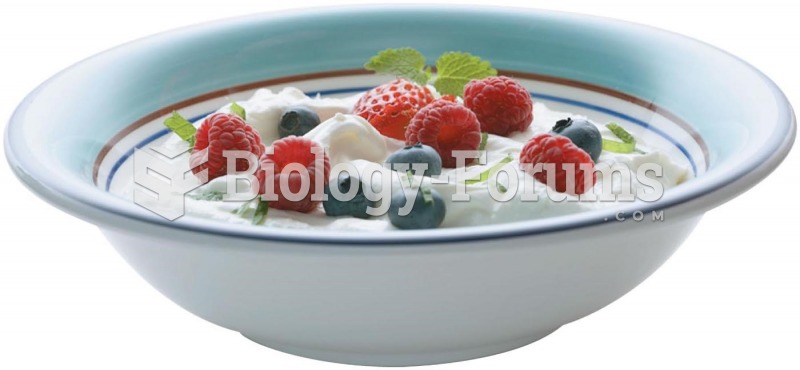|
|
|
Hip fractures are the most serious consequences of osteoporosis. The incidence of hip fractures increases with each decade among patients in their 60s to patients in their 90s for both women and men of all populations. Men and women older than 80 years of age show the highest incidence of hip fractures.
If you use artificial sweeteners, such as cyclamates, your eyes may be more sensitive to light. Other factors that will make your eyes more sensitive to light include use of antibiotics, oral contraceptives, hypertension medications, diuretics, and antidiabetic medications.
Complications of influenza include: bacterial pneumonia, ear and sinus infections, dehydration, and worsening of chronic conditions such as asthma, congestive heart failure, or diabetes.
More than 150,000 Americans killed by cardiovascular disease are younger than the age of 65 years.
Historic treatments for rheumatoid arthritis have included gold salts, acupuncture, a diet consisting of apples or rhubarb, nutmeg, nettles, bee venom, bracelets made of copper, prayer, rest, tooth extractions, fasting, honey, vitamins, insulin, snow collected on Christmas, magnets, and electric convulsion therapy.
 Effects of excluding Helicopsyche borealis on benthic algal biomass: (a) two sets of tiles at the be
Effects of excluding Helicopsyche borealis on benthic algal biomass: (a) two sets of tiles at the be
 Apply forearm to the deep fascia of the back. Stand to one side of the face cradle; use the proximal ...
Apply forearm to the deep fascia of the back. Stand to one side of the face cradle; use the proximal ...





